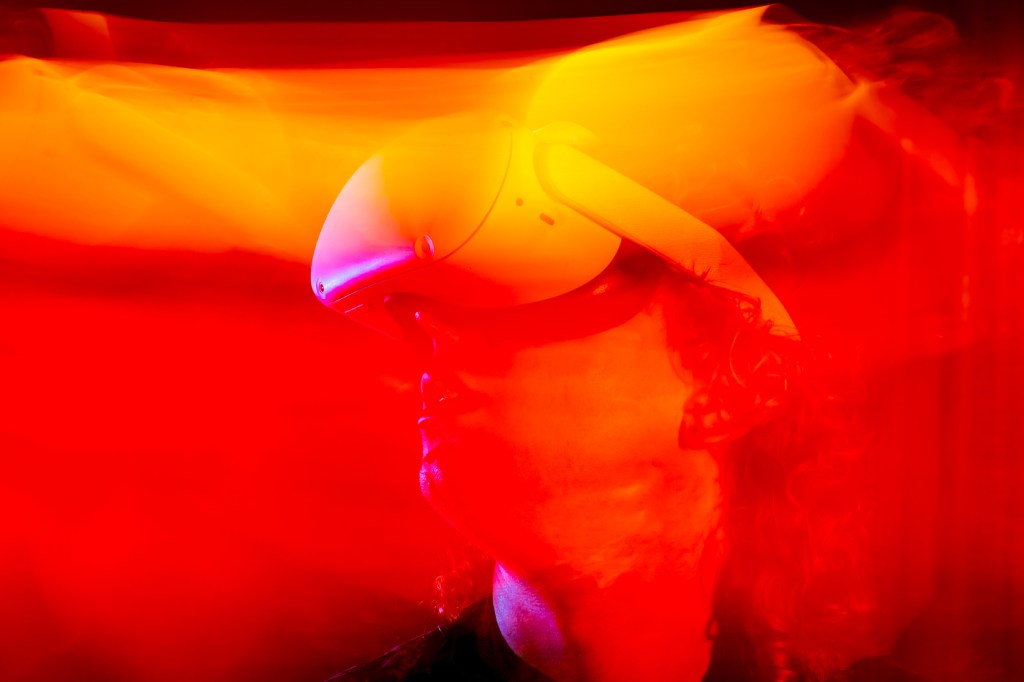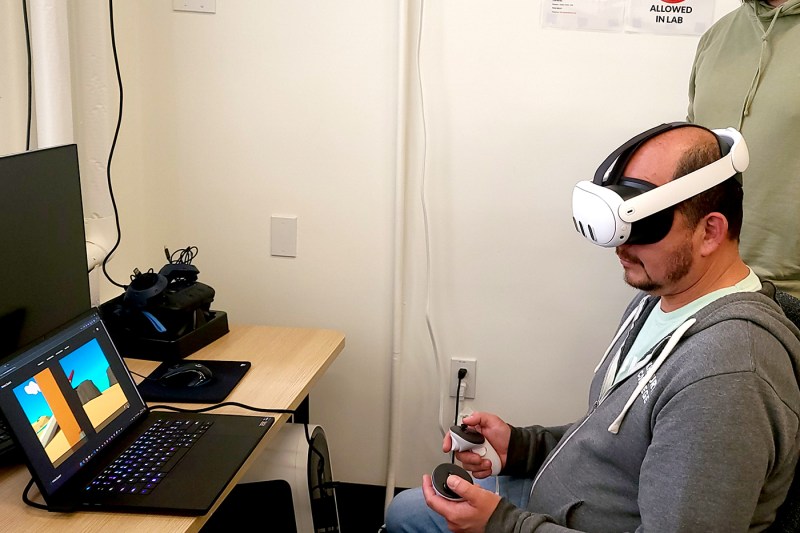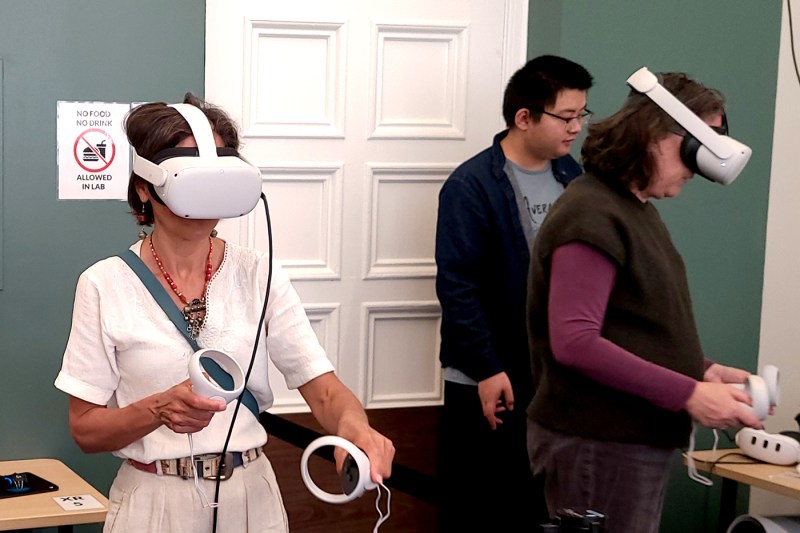New virtual reality games designed by Northeastern graduate students unveiled at showcase on Oakland campus
Students had already tested their games on each other. The showcase was a chance to share the games with other — potentially less experienced — gamers and identify where improvements could be made.

OAKLAND, Calif. — The inaugural cohort of Game Science and Design graduate students on Northeastern University’s Oakland campus unveiled its first games at a virtual reality showcase last week, guiding visitors through virtual adventures ranging from putting out fires to mining crystals in the deep sea.
Students studying with professor Nathalie Mathe milled around the campus’s new VR lab — outfitted with state-of-the-art Quest gaming PCs — to try out each other’s work with Meta headsets and handheld controls.
“There are a lot of controls in my game,” student Dexter Delandro said about his game, “Deep Sea Treasure Hunt.”
“I’ve learned that it might be hard to figure out what you need to do and what you need to do it, especially if it’s your first time playing VR,” he said.
Delandro’s game appeared fun, but complicated. Slipping into the scuba vest using VR was a little difficult but the underwater environment featured purple crystals that invited the user to unearth them with a pickaxe and store them in a submarine wagon.
Students had already tested their games on each other. The showcase was a chance to share the games with other — potentially less experienced — gamers and identify where improvements could be made.
Jianzhe Zhu created “The Art of Wood,” which gives gamers the chance to practice building towers with “wood” blocks in the style of Chinese wooden architecture.
“I always liked to play Lego games,” said Zhu, who earned a bachelor’s degree in civil engineering in China. “For the future work, I will make the blocks more realistic, so they’ll look like wood.”
Wearing a Meta (formerly Oculus) headset and using hand controls, a player pinches long red shapes that resemble the timber foundation, frame and decorative roof of a traditional Chinese structure. Sometimes turning the pieces in space is required to line them up correctly. Toward the end of the third level, the pieces resisted falling into place.


“I need to fix that,” Zhu said.
This is the second semester of a two-year master’s program. Mathe, who previously taught XR (augmented reality) and immersive media at Drexel University in Philadelphia, said the facilities offer students the opportunity to learn robust game design and testing. Students can measure user responses in a separate biometrics lab to make important assessments.
“That’s big in the game industry,” Mathe said. “These students come from computer science, engineering and art. They don’t necessarily have the knowledge about how to design studies using a scientific approach.” Tracking eye movements, for example, shows whether users are looking where the designer wants them to look.
A second cohort of master’s students will begin in the fall, Mathe said, and the program will continue to grow.
Students had only been working on the games for half a semester, so each project had some small glitches or wasn’t completely finished. But the basics were there. Most importantly, they all seemed to be fun to play. Even a game about sorting garbage.
Featured Posts
Julia Wu’s game is set in Shanghai, the city where Wu grew up. It’s designed to teach residents how to correctly sort their trash. The environment is a patio where a table holds different types of trash — food, toys, soda cans — and three color-coded bins stand nearby. Using hand controls, users grab a piece of trash, open the correct bin and drop in the trash. (Pro tip: CDs go in the recycling, not the trash bin!)
Wu got her bachelor’s degree in game design at the University of Utah, Salt Lake City. This summer, she will return to Shanghai to do a co-op in game design.
Many projects had an educational component. Daksh Patel made a game in which users could practice something that’s dangerous to practice in real life: putting out fires. The environment of his game is a studio apartment with a small kitchen and living room. At the outset, there is a fire burning on the couch, but by grabbing a watering can, the user can put it out. The second level is trickier: A cooking pot is in flames on the stove, but by watching a video that appears on the apartment’s TV set, the user learns that dousing a grease fire with water will only make it worse. Better is to grab the pot’s lid and cover the fire.
“It’s still advised to call the firefighters and leave it up to them,” Patel said.
A second game about fire, designed by student Luang Xing, is set in a smoky movie theater.
“The goal is for people to have more time to practice escaping a fire,” said Xing, whose teachers in China taught ways to get out of structures on fire. “But this is much more immersive and you get multiple chances to practice.”
Trung Nguyen, who was present for the showcase, designed a game about learning to play the drums. Using a headset and hand controls, the player watches a musical staff scroll by with black lines signifying drum beats. Players try to keep up by playing a virtual drum kit.
In “Cast Away,” designed by Yusi Cheng, the user is on a desert island surrounded by objects that would help them survive — on a fantasy island, at least. Included are wood logs, a small hut, a deer and a semi-automatic gun with magazines of ammunition. This is Cheng’s second master’s — his first was in information systems from Northeastern’s Seattle campus.
Developing (and playing) VR games, he said, “allows you to do stuff in places you can’t be.”











